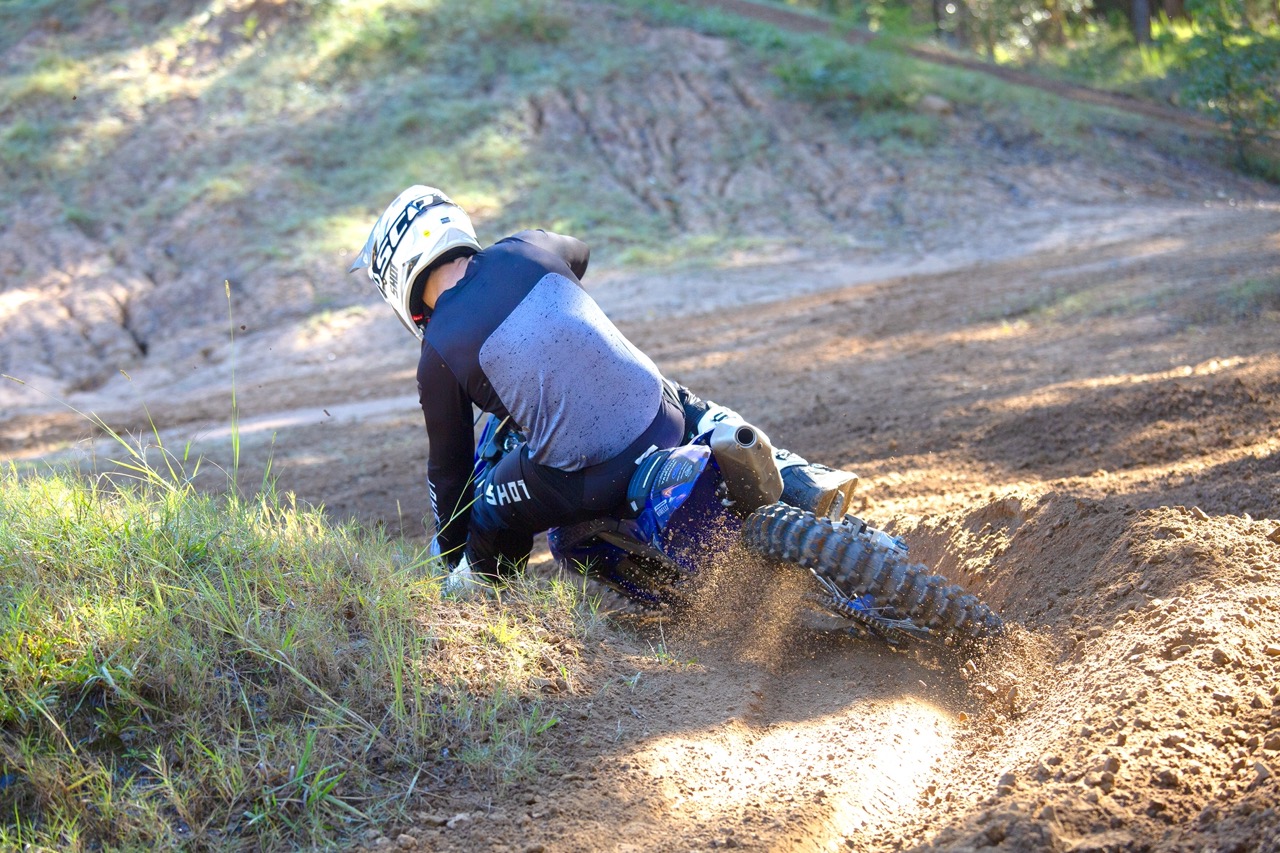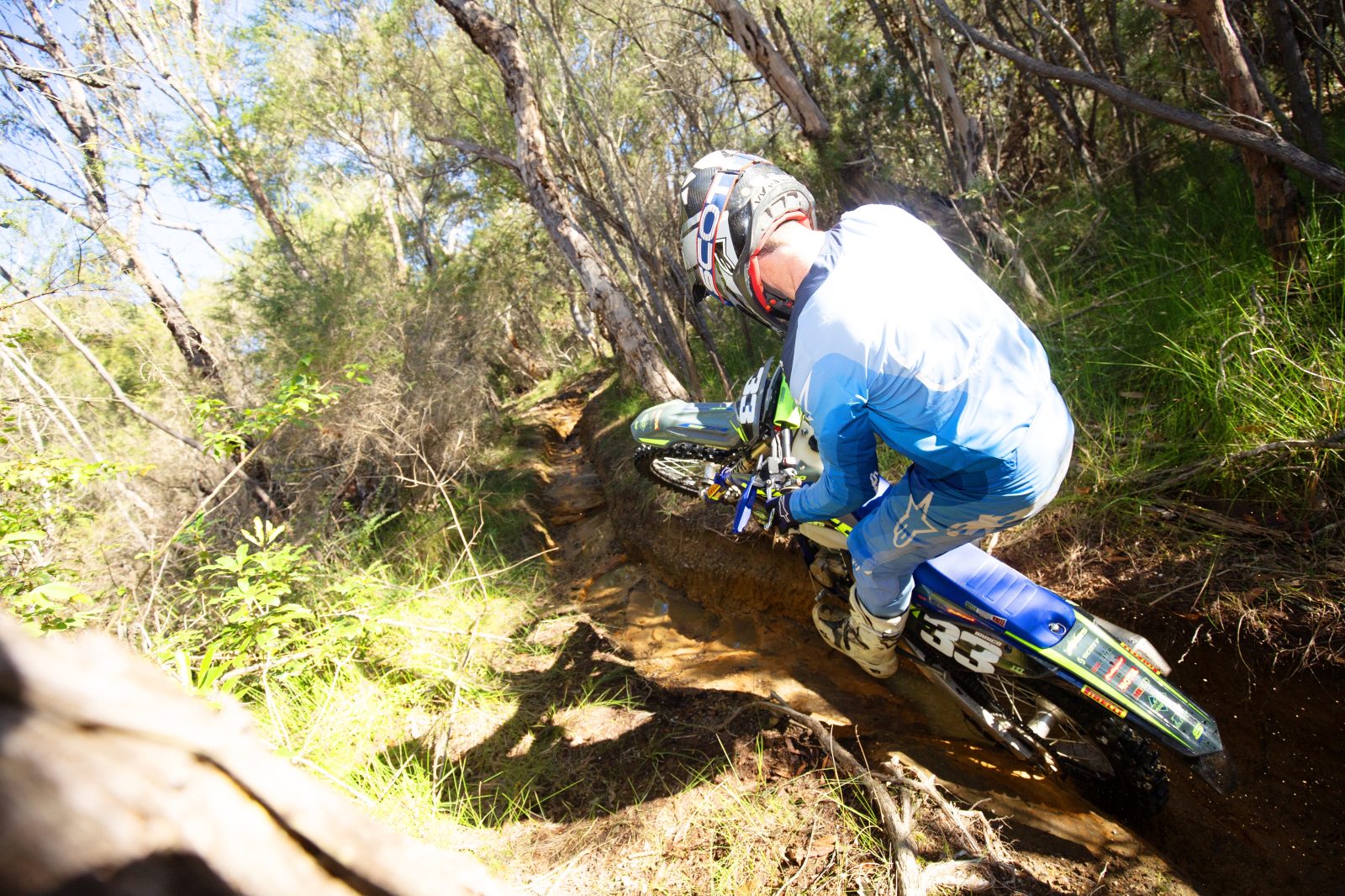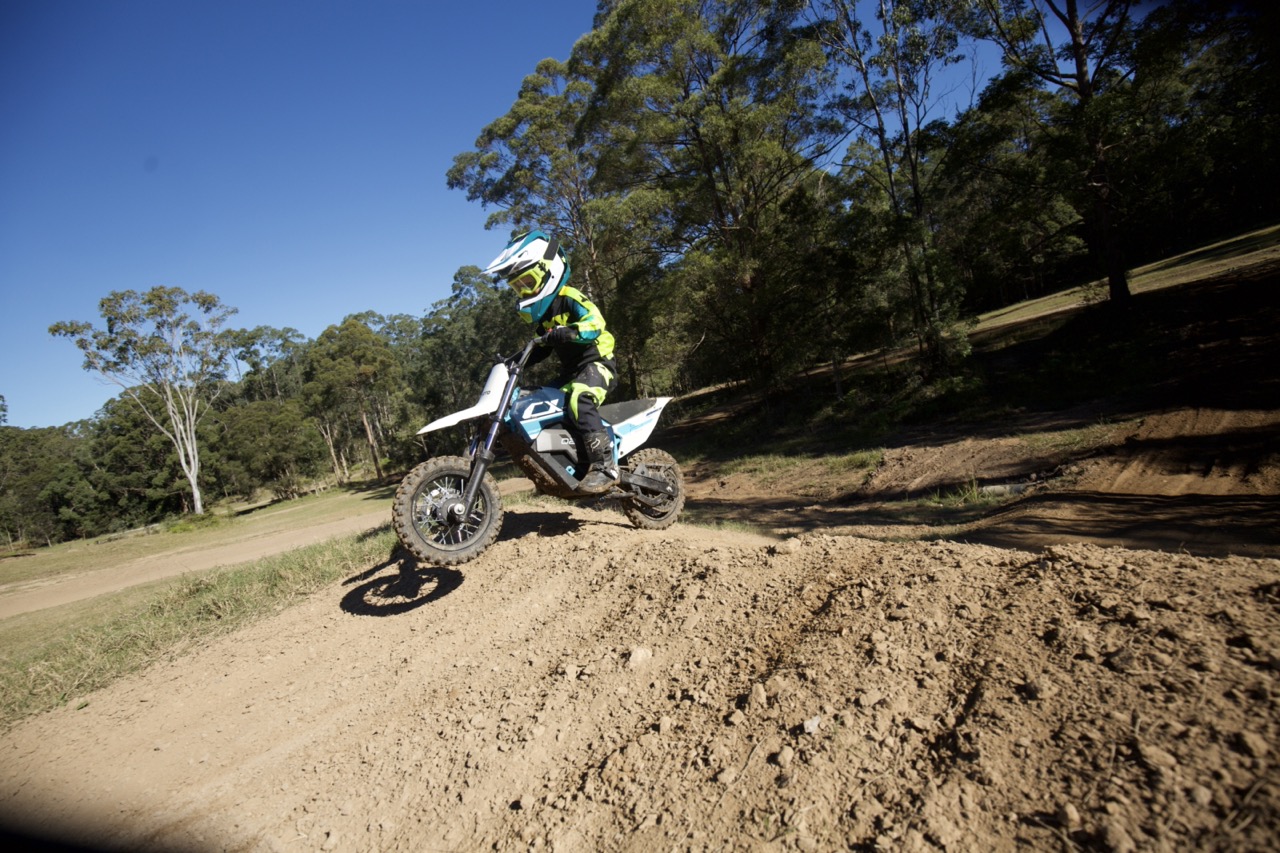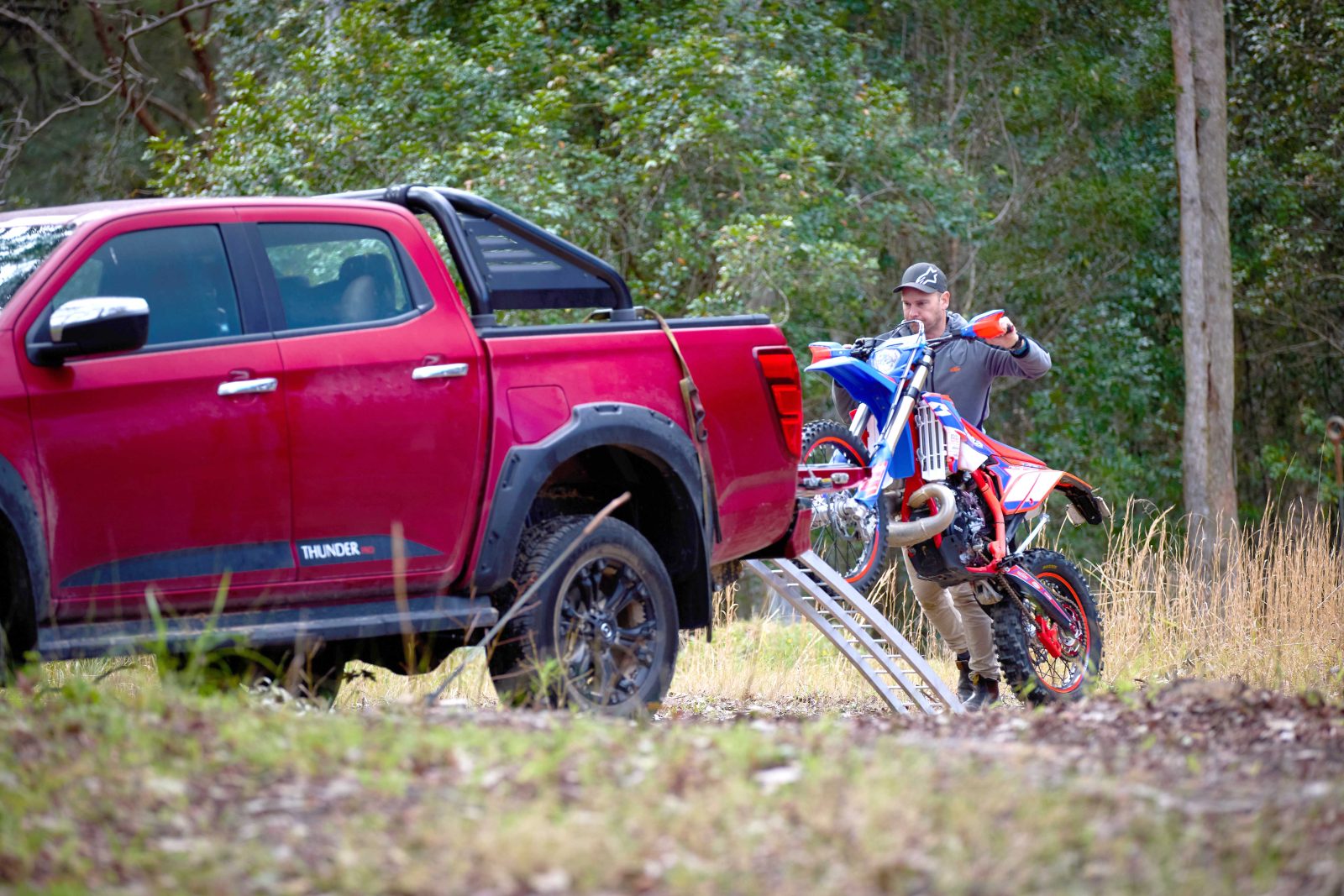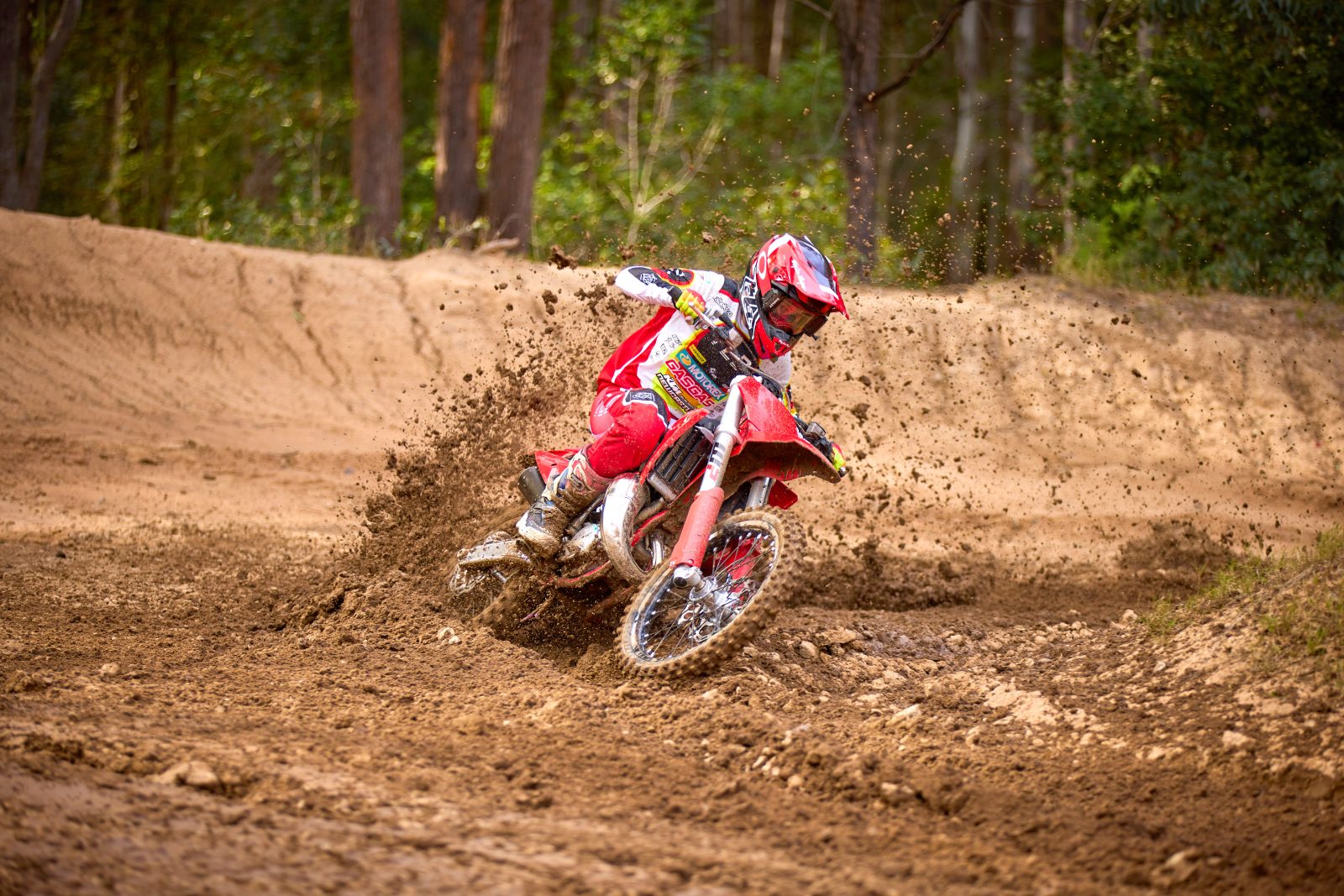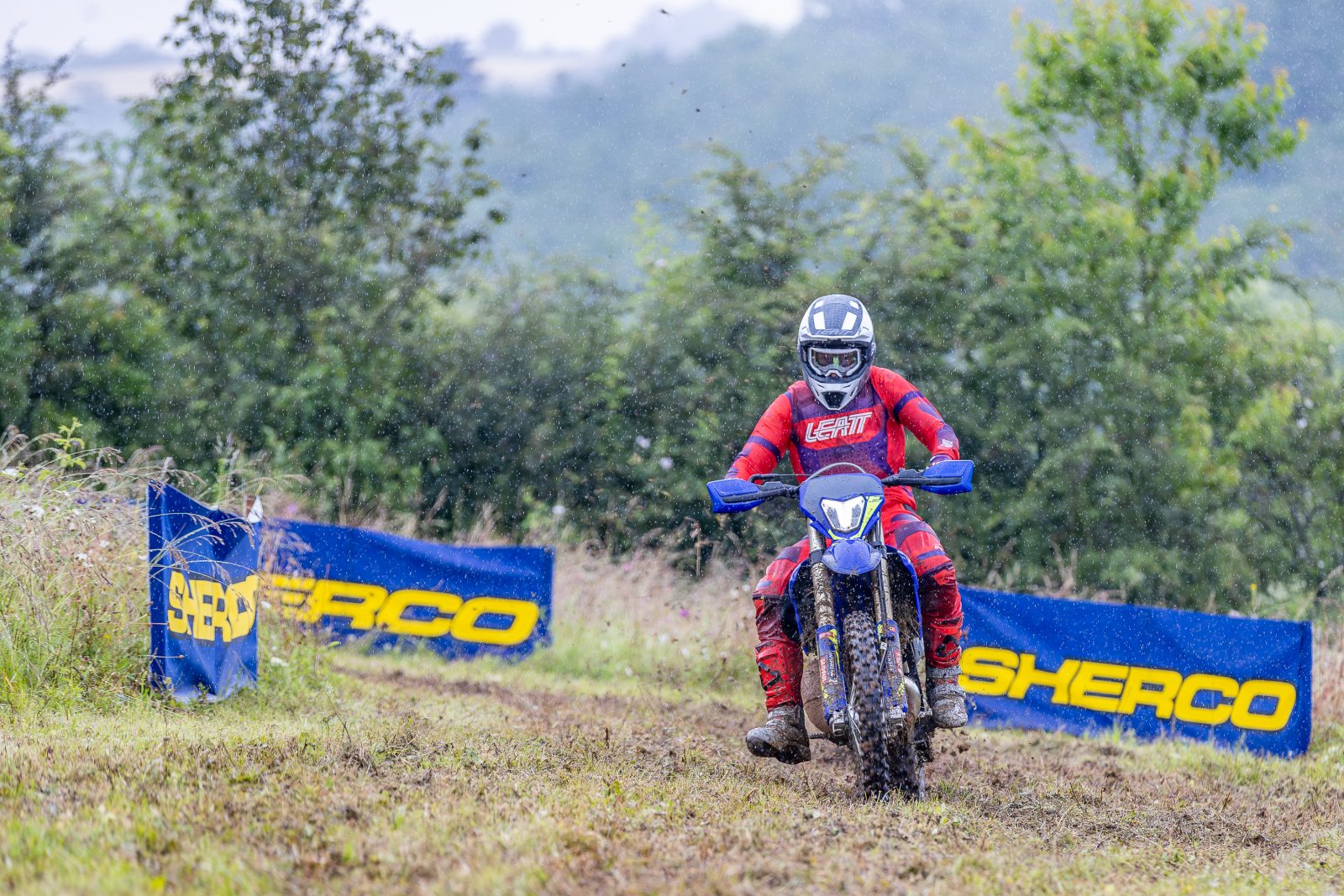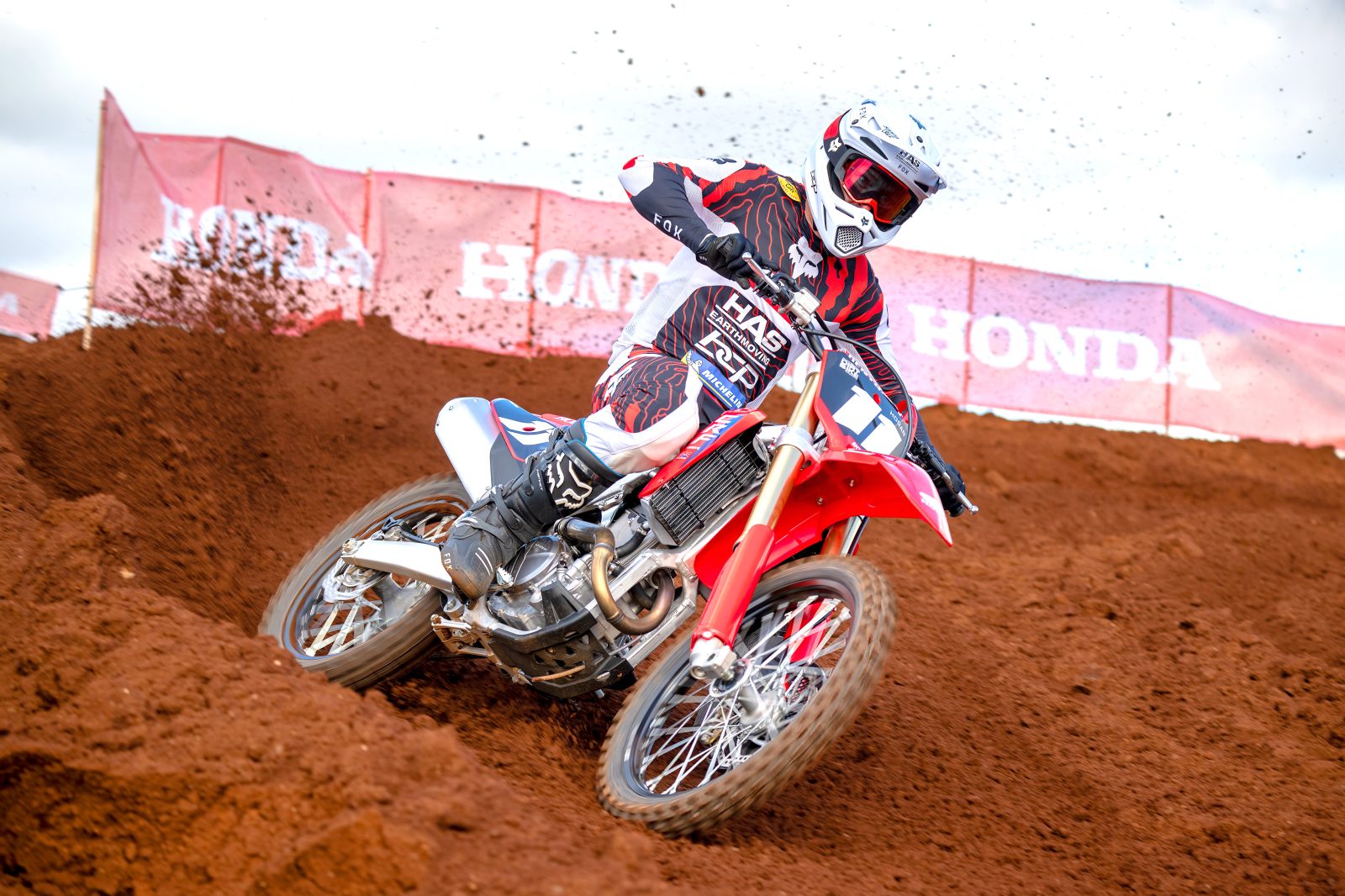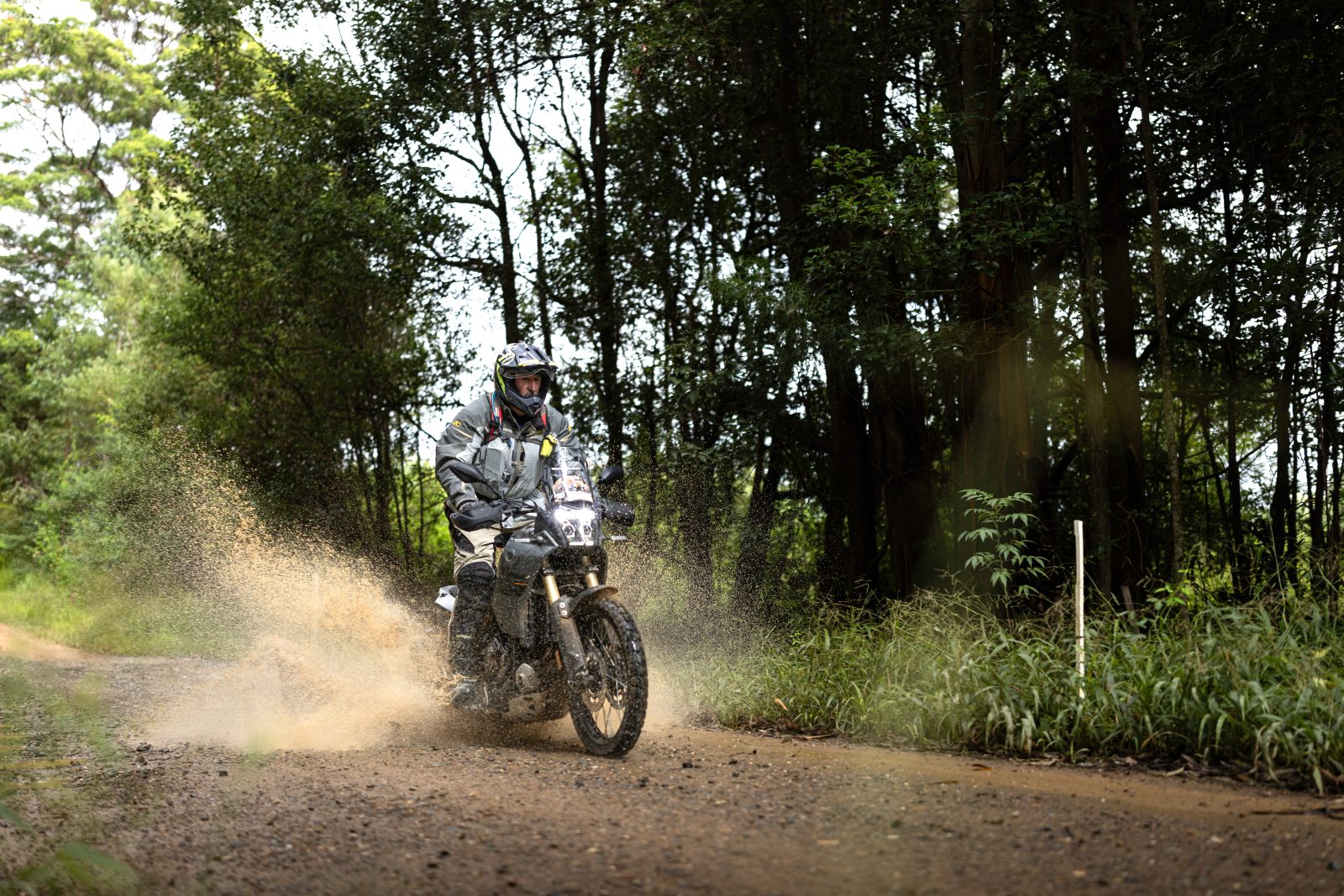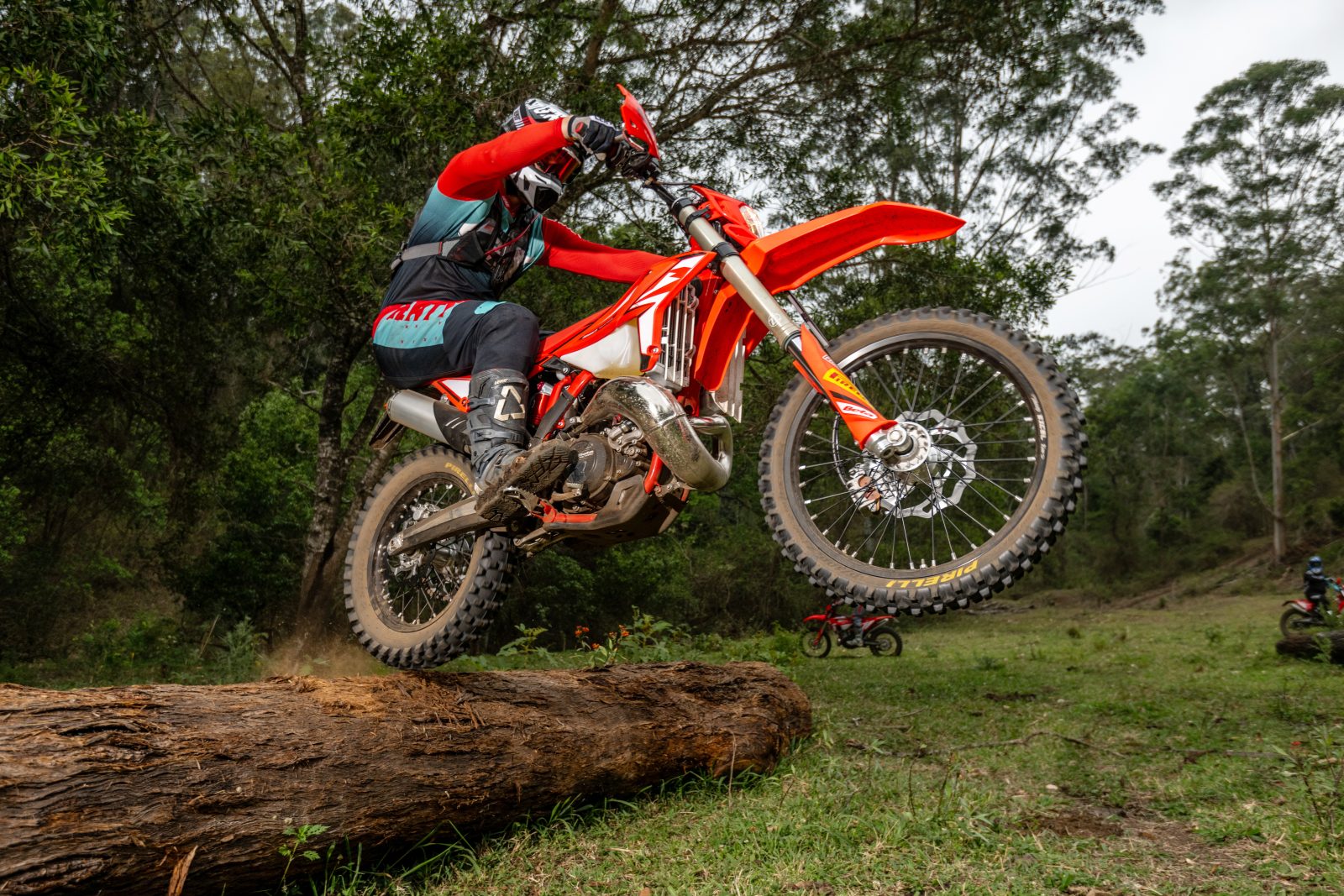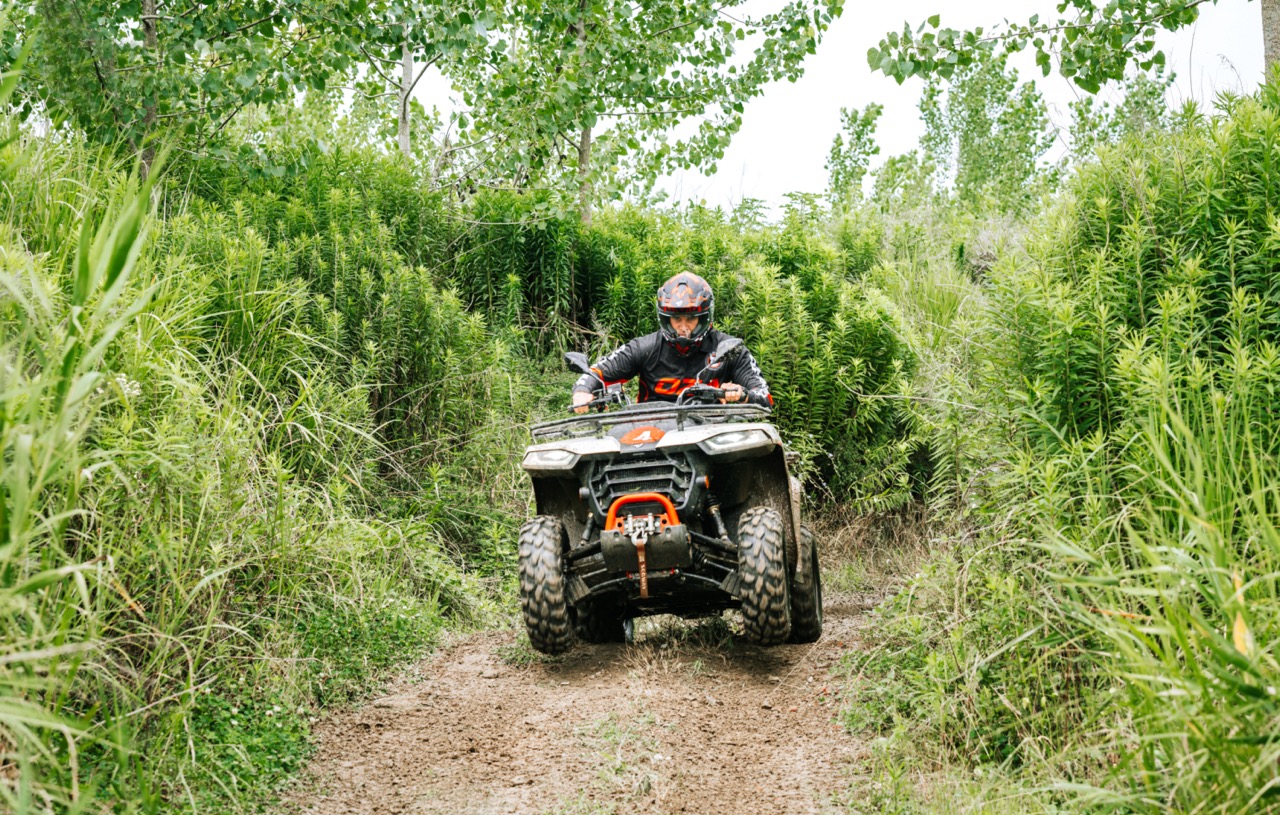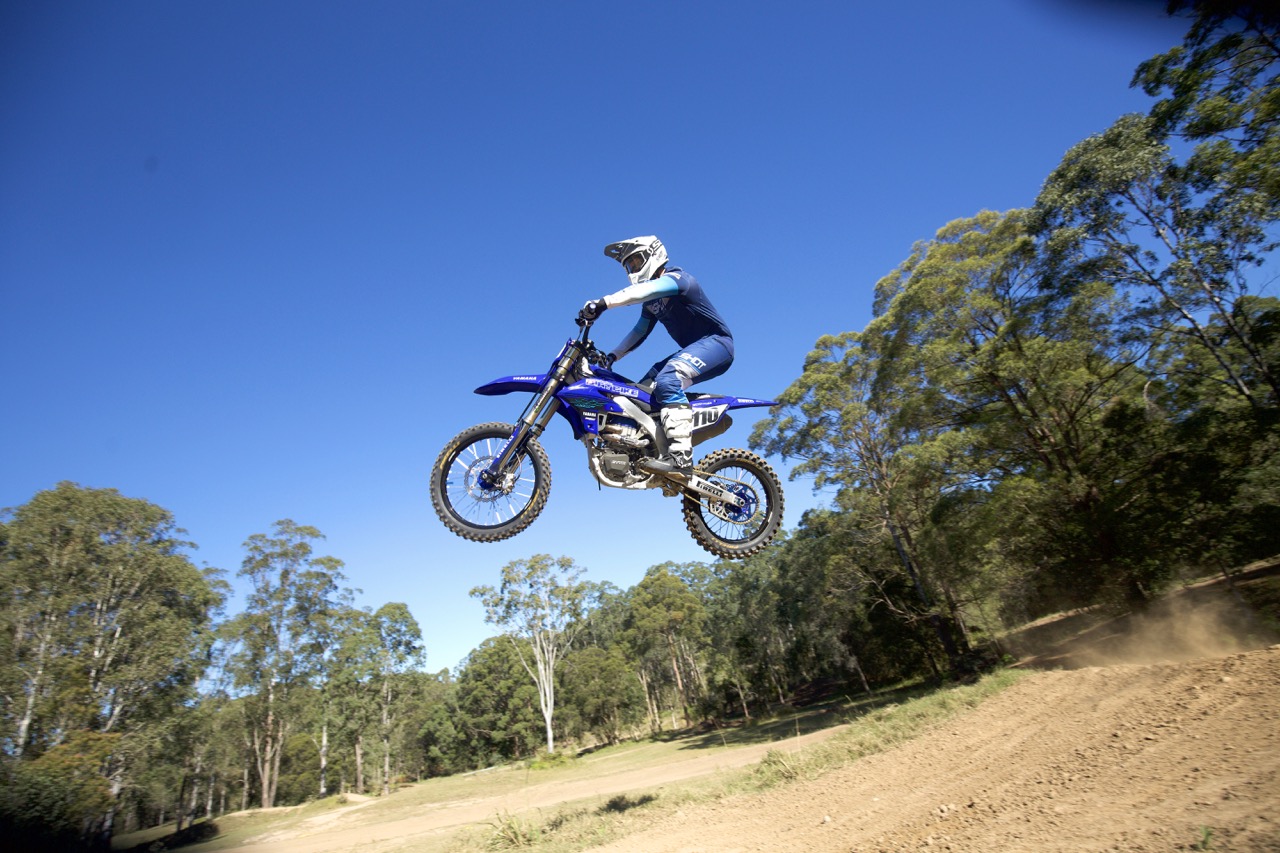In recent years, particularly since the COVID-19 pandemic took hold, our once semi-regular junkets or international bike launches have slowed down. But, when ADB Ed Mitch Lees rang back in February with a invitation to join a small, select crew of media for the international launch of the all-new 2024 Triumph TF 250-X in Florida I was chomping at the bit. But my excitement was swiftly followed by disappointment when I realized the launch date clashed with my already contracted TV hosting gig for the final round of the Indian Supercross Racing League. My good friend Danny Ham was sent in my place.
As the first Aussie to ride the all-new bike, Hammy was impressed and wrote up a concise editorial for the magazine back in issue #536. The bike has now finally arrived in Australia with a local launch at a private track on the NSW Central Coast. This time I was able to fill up the gear back and enjoy a very well-run launch. My plan was to strip Hammy’s review in issue #536 down to the five main things he thought were awesome with the bike in Florida and see if they made their way Down Under.

Powerplant
The heart of the Triumph TF 250-X is a fuel-injected, liquid-cooled, DOHC, four-stroke, 250cc single-cylinder engine. Compression ratio is 14.4:1, the cylinder head uses finger followers, and the rev limiter is set at 14,000 rpm. It’s paired with a close-ratio, five-speed gearbox, and final drive is 13/48.
My first few laps of this deep and technical circuit were mainly spent trying to miss the muddy parts in an effort to try to keep my gear semi clean for the upcoming photos. I spent two or three laps just getting used to the track. But, I couldn’t help but develop my initial first impression of the bike and the very first thing that came to my mind was how high the motor revs up into the very top-end of the rev range.
Hammy said the motor he rode in Florida had good bottom-end, mid-range and a fantastic top-end over-rev. It was a glowing review but would it translate the same on Australian soil?
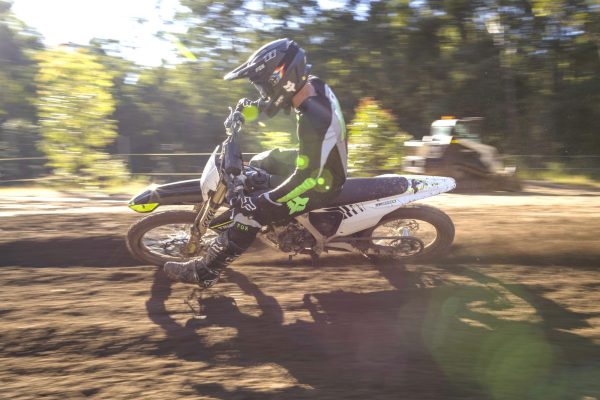
The Triumph TF 250-X punches out a claimed 48hp at 13,500rpm with a peak torque of 29Nm. And when you ride the bike you can definitely feel that the bulk of that power is produced when you are up fairly high in that rev range. For me, weighing in around 80-81kg without riding gear, I was one of the lighter media guys on the day. I found that there was a large gap in the gears which allowed you to rev the bike for a massive amount of time before needing that change up into that next gear. I almost had to train myself to just let the motor keep revving right the way up towards that rev limiter because my natural instinct was to change up a little earlier like I do on a 450.
With the deep conditions and how long each gear would rev out I would consider going up one tooth on the rear from standard to just slightly bridge the gap between gears. There was a decent amount of bottom-end torque which would lead into a strong mid-range, but the best part of the power plant was without a doubt its top end.
Triumph have opted for a single Keihin injector and a 44mm Delorto throttle body that did the job well with no flutters or unsuspecting bogs.
The motor has a strong, useable power plant that doesn’t have any crazy high points or low points. The bulk of the turns on our test track we used third gear and in only two hair pin turns required second gear for that instant acceleration.
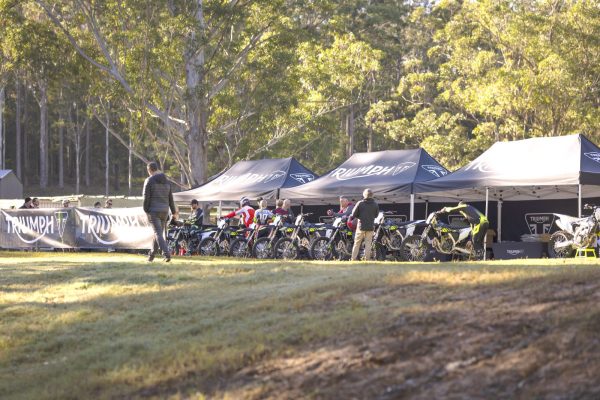
Handling
If I had to choose between stability or agility to characterize the handling of the Triumph I would have to lean towards stability. The bike feels exceptionally stable in a straight line and inspires confidence on the higher speed sections of the track. The bike is still playful and enjoys big jumps however I found that like most ultra-stable bikes, you need to commit to the first part of rutted turns. Once you’re in the ruts the chassis is predictable and tracks exceptionally well.
The KYB suspension soaked up everything that we could throw at it with the 48mm AOS coil fork feeling ever so slightly firmer than the KYB piggy back shock.
On our test day we had the luxury of testing three separate versions of the machine. One had production springs in the suspension which was aimed at riders between 70kg and 80kg. A medium-spec with springs aimed at riders from 80kg to 90kg, and a hard spec with springs fitted for riders 90kg +.
I found that the medium sprung bike was spot on for me and I measured up at 36mm of static sag along with 102mm of ride height. We were initially told to try the bike how it came standard which for me measured up at 40mm of static sag and 105mm of ride height but these numbers made the bike very difficult to turn and felt really low in the rear. One thing that Hammy mentioned to me personally was that Ricky Carmichael’s preferred ride height was 102mm. This confirmed exactly what I was feeling out there on the track which is that the new Triumph doesn’t respond well to too much static sag or ride height.
The balance of the new Triumph TF 250-X is super important and once you have this dialed in front to rear, you can start to fine tune the compression and rebound clickers. The rebound on both the forks and shock responded well to speeding up slightly. Going out to 14 clicks helped to keep everything moving and not packing down on a relatively sticky track.
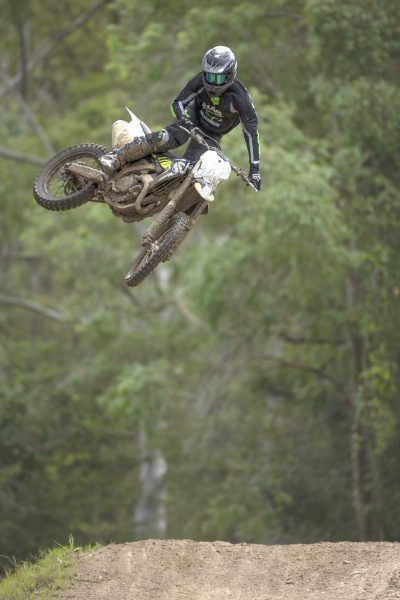
Frame
The frame can either make or break and history has shown us that while its relatively easy to manipulate a power curve or gain a little horsepower, it is almost impossible to fix a chassis. For Triumph, this proved to be exceptionally important and was the main reason for the final delay in going to production. The global R&D team weren’t satisfied with the chassis so a complete transformation took place.
The finished product that we see on the new Triumph TF 250-X is a high-strength, lightweight aluminum spine frame with twin cradle design. All frames are hand, TIG-welded as opposed to a production line machine welding process.
On the track, the frame gives a stable feeling and the KYB suspension complements this trait. It always is a bit of a trade-off with handling and it’s not possible to have 100 per cent stability and 100 per cent agility, something has to give. The TF 250-X wants you to tip it in with a lot of. If you’re apprehensive or doubt yourself in the turn then the bike will want to stand up on you. Once you are confident pushing it, it is a predictable and stable package that won’t punish you in turns, you just have to trust it.
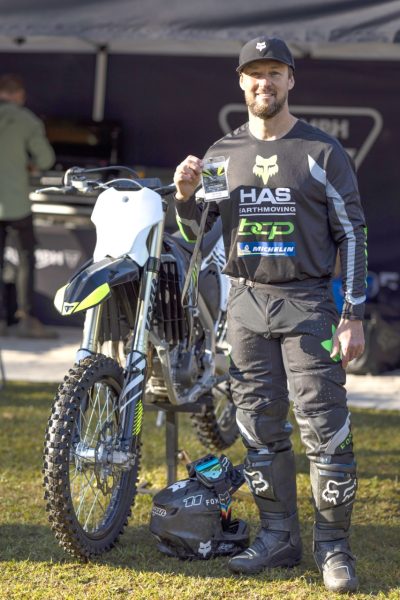
That Feel
One of the best things about the new Triumph TF 250-X is that it feels like no other bike. This was one of Triumph’s main objectives when they started this project. The bike even has a unique feel when just sitting on it, with its flat part of the seat where you pop yourself down for turns. Overall the bike feels stable, yet still playful.
The rider triangle feels very comfortable. For me, measuring 178cm I felt like I wasn’t cramped in the slightest and my cornering position felt well-balanced from front to rear. The front brake and clutch levers felt nice and not too bulky, while the footpegs had plenty of surface area and were super grippy. The package was finished off with a very grippy, Gripper Seat cover that locked me in position.
Hamming it up?
Triumph have entered the small-bore category with a bang! Like Hammy said, the TF 250-X has a strong motor but I reckon it’s the top-end that really shines while the chassis and handling shines in the stability department. Hammy felt like it railed corners and I agree, so long as you charge into them with momentum. One thing we both agree on is that the TF 250-X will be hard to beat in this year’s 250cc motocross shootout.
Even more fruit
There’s a long list of accessory components starting with an exhaust, in collaboration with Akrapovic, that gives a power increase between 9,000-13,000rpm, XTRIG holeshot device, Athena front guard mounted LC-GPA launch control unit and Triumph’s WiFi app engine map system. For this year the app will be limited to 10 pre-installed factory set maps.
Control Module!
There are numerous buttons to choose from on the left hand side of the handlebar. Here’s what they do:
LC – Launch Control. For me personally I’ve never been a huge fan of launch control as I find it generally always seems to dull the power too much, particularly on a 250F. When I tested the Triumph’s launch control I felt I wasn’t able to keep the bike in the meaty part of the power and was able to get a better start on the normal mode.
QS – Quick shift. I’ve tested a few Quick Shifts over the years and I’ve never been a huge fan as I always have a finger on the clutch for a quick slip to help slot in a gear change. I found the quick shift on the Triumph had this very small cut of the ignition as it would change up gears and it put me off a little. I think that some of the new generation riders that don’t ride with any fingers on the clutch may find this handy.
TC – Traction Control. Even though our conditions were deep and grippy I tried the traction control a couple of times throughout the day. On this track I found it smoothed the power out a little too much for me however I’d love to test this on a dry, slippery track.
M – Mode. There are two maps available. The standard map has no light on the switch, and there is a more docile mode which has a blue light when activated. This mode feels similar to when traction control is on and really seemed to dull down the power. I preferred the standard map hugely over the other map.
Words | Lee Hogan
Photos | Dean Walters Photography
